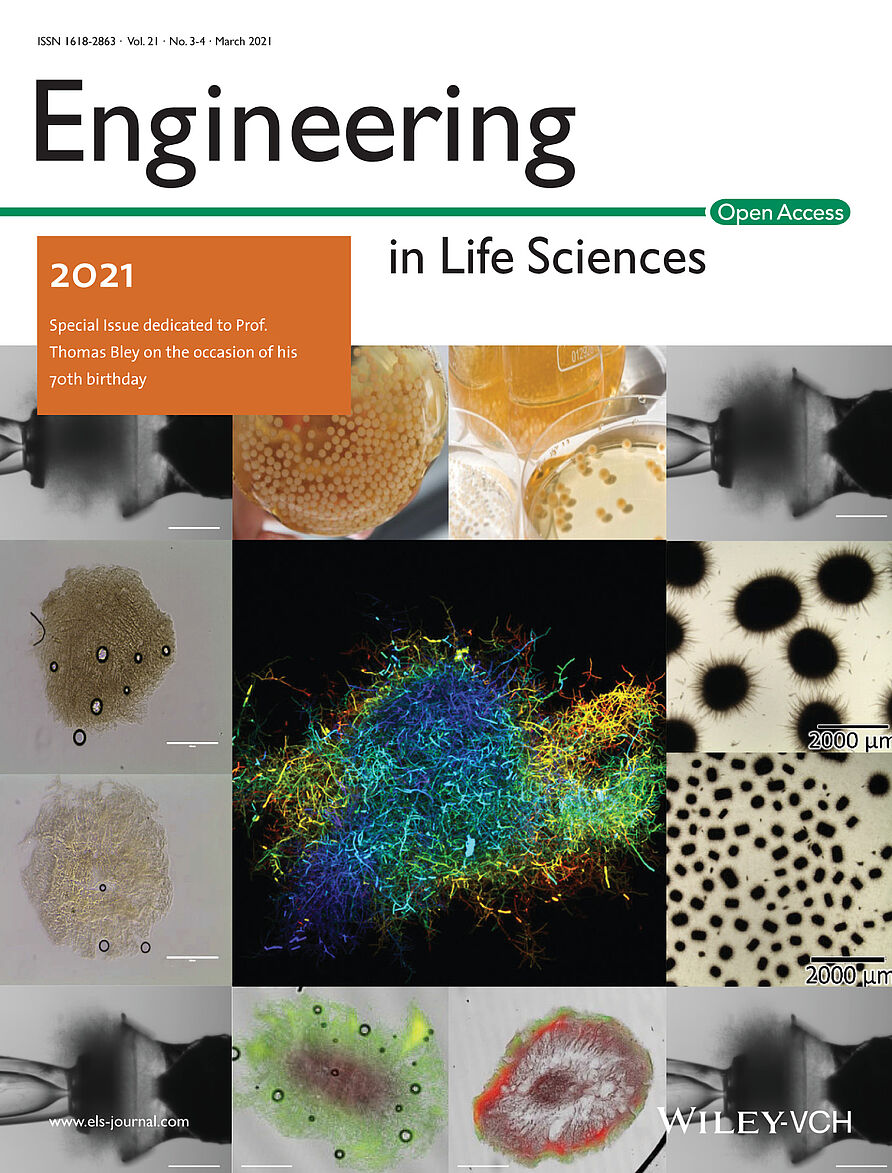The cover page shows a collage of pelleted actinomycetes: Center – Depth‐coded image of Actinomadura namibiensis. Corner points (from top left clockwise) – Mechanical compression experiment on a single pellet (A. namibiensis pellets). Above – Pelleted cultivations of Lentzia aerocolonigenes. Left – Pellet slices of L. aerocolonigenes under different mechanical stress induced by glass particles. Right – L. aerocolonigenes pellets generated by macroparticle‐enhanced cultivation. Below – Sliced pellets CLSM images from cultivation of L. aerocolonigenes. For details see article DOI 10.1002/elsc.202000060.
The contribution (Böl et al. (2021), Challenges of influencing cellular morphology by morphology engineering techniques and mechanical induced stress on filamentous pellet systems - A critical review, Engineering in Life Sciences 21, 51-67) presents the diversity of morphology engineering techniques for tailor-made morphologies of filamentous microorganisms to enhance product formation. These techniques range from microparticle- and macroparticle-enhanced cultivation to salt-enhanced cultivation. The review discusses how the morphology of filamentous microorganisms can lead to higher product concentrations and how micromechanical, multiphase flows and fluid mechanics can support biotechnology in implementing these processes in growth and product formation models, which allow a correlation to productivity.

